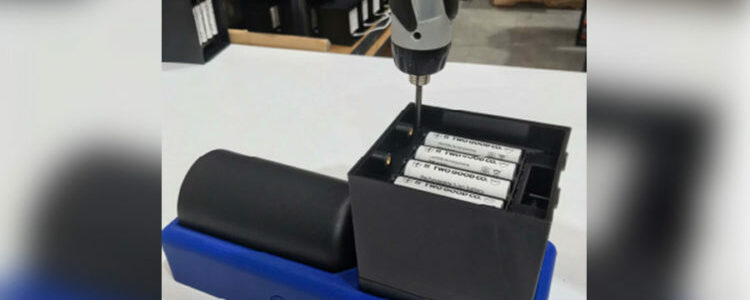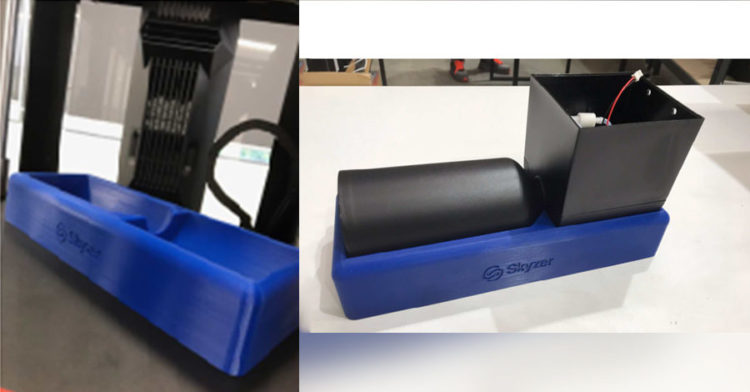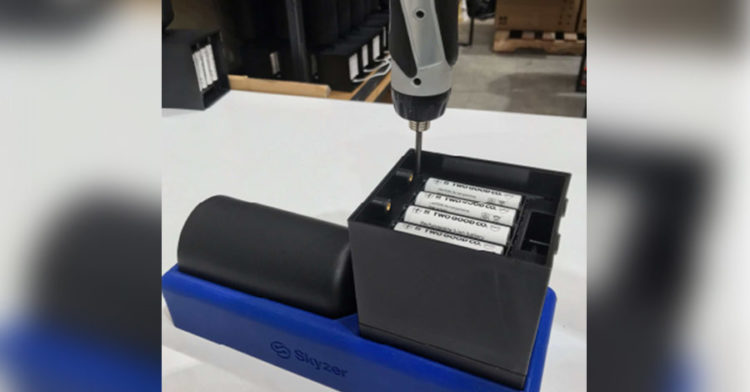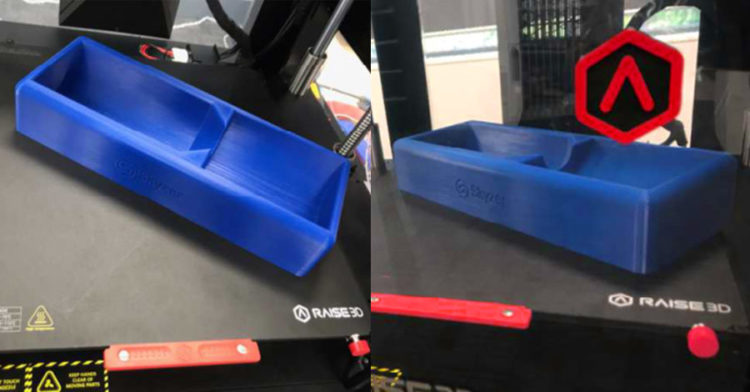24/08/23

Skyzer is a 19-year-old company based in Sydney, Australia and is the most trusted product lifecycle services company in the country. Skyzer’s activities focus on the electrical equipment industry, and these activities include providing customers with flexible product assembly, uploading firmware, repairs, refurbishment and logistics services, as well as end-of-life safe destruction and recycling solutions. As early as 2012, the company has used 3D-printing technology to produce customized products. Recently, Skyzer bought a number of Raise3D Pro3 printers for its Sydney and Melbourne factories, which not only provide more capacity for their customized services, but also greatly reduce costs, both in terms of money and time. This finally made building a mass-production factory using 3D printing as its main manufacturing process a reality .
Skyzer’s primary responsibility is to assemble, process, repair and test their electronic components for customers. Since these electronics have different heights and different geometries, they must be assembled with tailor-made assembly fixtures. Custom assembly fixtures prevent damage to the products or to subassemblies during assembly and testing.
Raise3D printers allow the company to respond quickly to customer’s needs and produce assembly jigs to specifically fulfil a customer’s requirements. Skyzer receives confidential product models from its customers, and then they can design and modify fixture models directly on the computer, which in turn are then printed directly on a Raise3D printer in-house. Skyzer does not have to buy fixtures from third parties, therefore shortening production time, advancing delivery dates, and greatly protecting their customers’ intellectual property. It is a quicker, cheaper and safer process for both Skyzer and its customers.
To give an example, the picture below shows a new, non-contact soap dispenser created by innovative Australian design company, TwoGood. Skyzer designed and produced a corresponding jig themselves, after receiving the model from TwoGood, and used that jig to assemble the products. This simplifies the product’s assembly process. The product will hit the Australian market later this year.

Figure 1. The assembly jig of TwoGood’s new non-contact soap dispenser printed on a Raise3D Pro3 printer.
Skyzer has purchased several Raise3D Pro3 printers for its Sydney and Melbourne factories. The 300 x 300 x 300 mm build volume of the Pro3 series printers makes it possible to print custom models in a wide variety of sizes. Furthermore, the reduction in production time and the cost savings from printing assembly jigs using a Raise3D printer are staggering.
Skyzer estimates that its overall production costs will be slashed by 32% after using Raise3D’s products. Without customized jigs, at least 2 workers are needed to assemble the necessary parts. With 3D-printed jigs, only one worker is needed to assemble the parts and with only one hand, which greatly reduces the required labor. Additionally, using the assembly jig as an alignment tool, workers can avoid damaging and scraping the products. Mr. Troy Sneddon, CEO of Skyzer, explained, “It’s natural to see labor cost and parts wastage savings, however there are also substantial cost savings when compared to alternative tooling and mold costs”.
With the Raise3D Pro3 printer, Skyzer’s capital expenditure will drop exponentially. According to Mr. Sneddon, “(The original approach) can cost upwards of $10,000 and so it is only suitable for very large-scale projects”. In the past, Skyzer needed to entrust a jig maker or an injection molding plant to make assembly tools or parts, which required high processing fees. Skyzer handles hundreds of thousands of devices each year. If all the assembly fixtures were all produced by third-party manufacturers, it would be incredibly expensive. In contrast, Raise3D’s 3D printers are reasonably priced in comparison, with negligible maintenance costs .

Figure 2. The 3D-printed jig helped the Skyzer team to easily assemble the products. Raise3D Helps Skyzer Smooth Printers Fleet Management
The stability of the Raise3D Pro3 printer and the Raise3D ecosystem provide Skyzer with a more professional mass-production solution. “The reliability of the machines means we can print with confidence throughout the night and the Pro3 edition snap-in extruders are a real improvement on previous models. They will definitely decrease maintenance-based downtimes”, said Mr. Sneddon. He also advocated that RaiseCloud’s cloud management enables seamless supervision and sharing of print jobs between sites. Skyzer managers can remotely supervise the printing situation in the two factories in Sydney and Melbourne through RaiseCloud, and allocate and manage printing tasks in real time.
Skyzer currently has a custom-built assembly line and mass-produces the customer’s product in Australia for commercial distribution. In the future, Skyzer will also build a larger 3D printing factory to meet growing customer demand.
The upgraded features of the Pro3 series guarantee stable and efficient operation 24/7:

Figure 3. Skyzer begins mass printing assembly line jigs for use in its factory.
The Raise3D printer inspires a higher level of creativity in the team throughout the production process. “Even our Finance team have asked for us to 3D-print solutions to office-based problems!” In the future, Skyzer hopes that Raise3D can launch metal 3D printers and larger machines as well as expand the offers of filament to more practical materials. They affirm that this can have a huge potential to allow them to do better for their customers. “We foresee exciting opportunities evolving within in-house product design and development, further contributing to the expansion to the client solutions we have on offer.” Mr. Sneddon is looking forward to the ways in which Raise3D printers will be applied in the future.